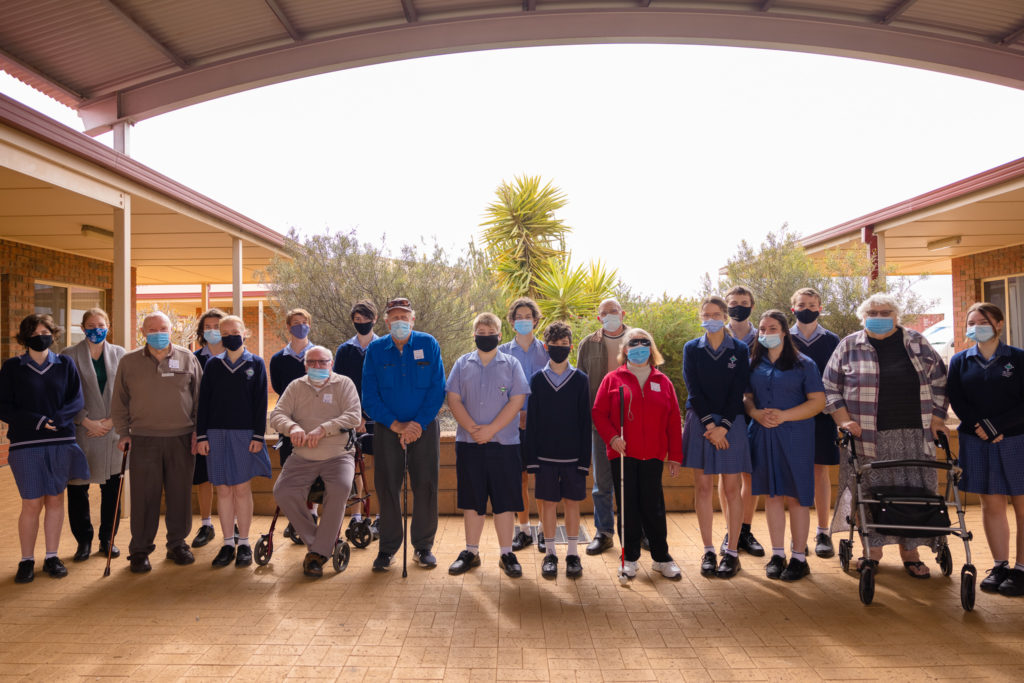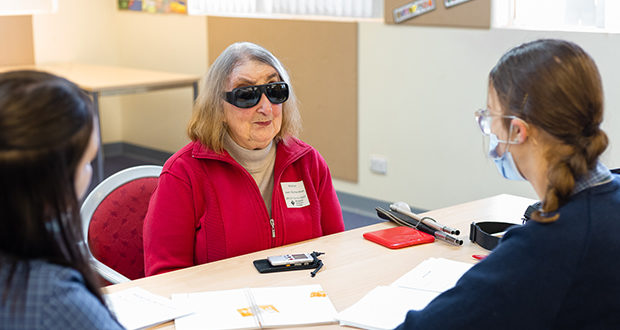Each Friday morning, a group of 24 teenagers and six older citizens sit and share their life stories, as part of an Australian-first project to reduce loneliness and build connections.
The sessions are part of the 'Bridging Ages life stories project', a multigenerational school program where students interview older adults on their experiences and reflect on them in a published book.
Helping Hand home care client Joan Richardson has been paired with three Year 9 students from Mid North Christian College on South Australia’s east coast.
During their meetings, she recollects her childhood growing up on a farm, training as a nurse in the methodist church, and her travels abroad.
“I think it's been a real privilege to be part of it,” Joan told Aged Care Insite.
“I'm getting to know the students that I'm with really well, and it's great to mix with young people and find out more about them.”
Founded in the UK, Bridging Ages has shown to be mutually beneficial for both older and younger participants.
Past case studies have shown that the regular interactions have enhanced understanding between the age groups, and in turn formed long-term friendships.
Joan, who is blind, says that experience of getting to know the students has caused her to reflect on what she had previously heard about younger generations.
“My grandchildren are in their twenties so it's really good for me to meet with teenagers,” she says.
“Unfortunately, the perception we give of teenagers is not good because we hear all about the bad things, but these are just lovely young people.”
A 2019 study in the US found that engaging in an intergenerational education program reduced age-based prejudice for all participants involved.
With over half of Australians having experienced ageism, the use of mixed age learning to overcome negative stereotypes is becoming more common in traditional schools and universities.

Lilli, who is a Year 9 English student, says she has highly valued the time that she has gotten to know Joan.
“You don’t really know what it’s like for seniors in their life until you actually sit down and talk with them about their experiences,” she says.
“Joan has told me how she grew up on a farm and she didn’t have many things around her, but she had family, so she’s really shown me how important family is.
“I definitely recommend this to any student who's willing to meet and talk to new people, especially in a different age bracket.”
Staying connected
The global COVID-19 pandemic has brought about increased feelings of loneliness in every age group
With a third of older Australians living alone, the risk of experiencing the negative mental and physical health effects linked to loneliness is raised.
The chief executive of provider Helping Hand, Chris Stewart, says that programs such as Bridging Ages are a creative opportunity for older adults to engage with their local school community.
“COVID-19 has increased isolation as many community services had to stop and some people feared going outside their homes,” Stewart told Aged Care Insite.
“We know how important it is to stay connected, which is why we are focusing on providing activities for our clients which reduce loneliness and create connections.”
The eight-week trial program has indicated early success, with home care clients and students reporting positive responses, according to Stewart.
He says there may be future plans to extend the program into Adelaide and around regional South Australia.
“Both younger people and older people are benefitting already, as the older person is getting out and about and meeting new people, meaning they’re no longer as isolated,” said Stewart.
“For the younger people, we’ve seen them learning new life skills, such as how to ask questions in a structured manner, how to engage with people who they haven’t met, and it’s helping them to break down those stereotypes.”
At the end of the year, the students will present a storybook that will detail their reflections on the life of their older partner.
Using storytelling as a form of intergenerational connection, Stewart says, is a way to solidify the knowledge and perspectives shared by everyone involved.
“Bridging Ages is a way of giving back and capturing those community stories that often go unnoticed,” he says.
“We’re hoping it will give our older clients a greater sense of confidence and a feeling that they’re not alone, they can share their history at the same time as they make new friends.”
Do you have an idea for a story?Email [email protected]
 Aged Care Insite Australia's number one aged care news source
Aged Care Insite Australia's number one aged care news source


One comment
Pingback: Two generations bridge the age gap through storytelling - Australian Institute for Intergenerational Practice